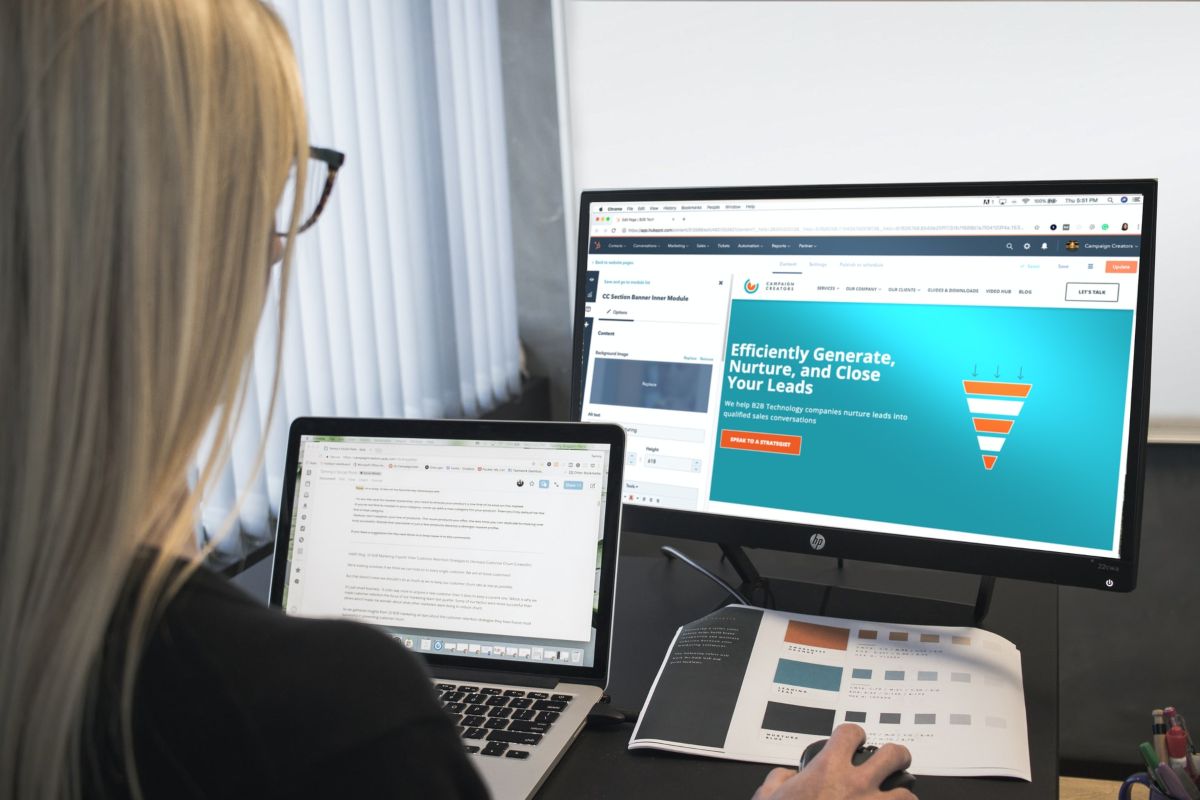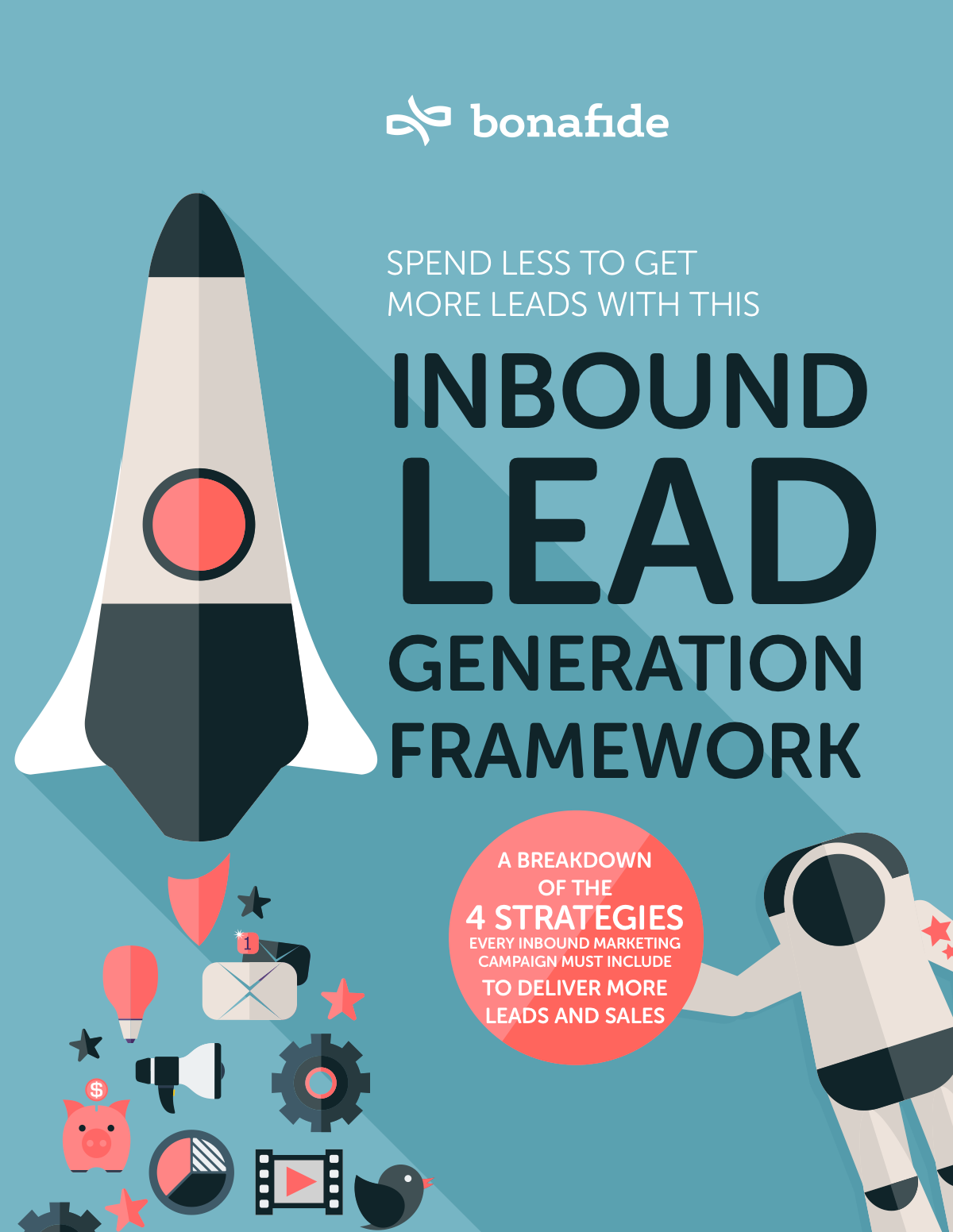Are you curious about how businesses find new customers in a way that feels natural and helpful? Many people want to attract folks who are already looking for what they offer, rather than chasing after everyone. This idea, so it happens, is what we call inbound lead generation. It is a way of bringing people to you, almost like a magnet, because you provide things they find valuable and useful.
For a business to keep going and get bigger, getting new people interested is, you know, a very big deal. The old ways of doing things, like cold calls or ads that interrupt, can sometimes feel a bit pushy. Inbound methods, though, feel much more welcoming. They are about creating a space where people can discover you on their own terms, which, frankly, feels better for everyone involved.
When you think about it, people these days like to do their own looking around and make their own choices. They want information that helps them, not just sales pitches. That's why figuring out good inbound lead generation strategies is, like, pretty important for anyone hoping to make a real connection with potential customers today. It's about being found when someone needs you, which is a rather smart way to do things.
Table of Contents
- What Are Inbound Lead Generation Strategies?
- Why Inbound Matters a Lot Right Now
- Key Pieces of a Good Inbound Plan
- Making Your Content Work Harder for You
- How to Turn Lookers into Real Possibilities
- Keeping Up with What Is New
- Common Questions About Inbound Lead Generation
- Moving Forward with Your Inbound Work
What Are Inbound Lead Generation Strategies?
Inbound lead generation strategies are ways to attract people who are naturally interested in what you offer. Instead of reaching out to them, you create things that draw them to you. This means making content, like articles or videos, that helps people solve problems or learn new things. It's about being a source of help and information, which, you know, builds trust.
Think of it like this: someone has a question or a need, and they go looking for an answer. Your inbound efforts make sure your business is one of the places they find. This could be through a helpful blog post, a useful guide, or even a video that explains something complex. It's a bit like setting up a welcoming sign for those who are already looking for directions.
The whole point is to bring in people who are already thinking about a topic related to your business. These people are often more ready to hear from you because they sought you out. This makes them, arguably, better potential customers down the line. It's a much softer, more inviting way to start a business relationship.
Why Inbound Matters a Lot Right Now
The way people find things and make buying choices has changed quite a bit. People do a lot of their own research before they even think about talking to a sales person. They look things up online, read reviews, and ask friends. So, for businesses, being found during this research phase is, like, super important.
Inbound lead generation strategies fit right into this new way of doing things. They let you be there when people are looking for answers, not just when you decide to tell them about your stuff. This means your business becomes a helpful guide rather than just a seller. It builds a kind of goodwill, too, which is very valuable.
Also, the cost of getting new customers through traditional methods can be quite high. Inbound ways, while they take time to build, often bring in customers at a lower cost over time. They create an ongoing flow of interested people, which, you know, helps keep things steady and growing. It's a more sustainable path, in some respects, for getting new business.
Key Pieces of a Good Inbound Plan
A strong inbound lead generation strategy has a few main parts that work together. These parts help you attract, engage, and delight people. It's a bit like building a house, where each piece needs to be in place for the whole thing to stand strong. So, we're talking about a few core ideas here.
First, it's about making sure people can find you when they look for things. Then, it's about giving them really good stuff once they do find you. And finally, it's about keeping them happy so they stick around and maybe even tell others. Each step, you know, matters a lot for the overall success.
It's not just one thing you do, but several things that connect. When these pieces work well together, they create a kind of system that brings in new interested people all the time. This system, in a way, becomes a very valuable asset for your business.
Making Helpful Things to Read or Watch
This is often called content creation, and it's a big part of inbound. It means making things like blog posts, guides, videos, or podcasts that answer questions your potential customers have. The goal is to be really helpful, not just to sell. If you can help someone solve a problem, they'll remember you.
For example, if you sell garden tools, you might write an article about "how to grow the best tomatoes." People looking for that information might find your article, and then they'll see your tools. It's about providing value first, which, you know, makes a lot of sense.
The quality of what you create really matters. People can tell when something is put together with care and when it's just there to fill space. Good content makes people want to learn more from you, which is, in fact, what you want. It's a bit like being a good teacher, giving out useful knowledge.
Getting Noticed on Search Sites
This is often called Search Engine Optimization, or SEO. It's about making sure your helpful content shows up when people type questions into search sites like Google. You want your articles and pages to be among the first things people see. This involves using the right words and structuring your content in a way that search sites like.
When someone types "best way to save money on electricity," you want your article about energy-saving tips to appear high up. This means understanding what words people use when they search. It's a bit like making sure your shop is on a busy street where lots of people walk by.
SEO is not a one-time thing; it's something you keep working on. Search sites change how they rank things, so you need to stay current. But when you do it well, it brings in a steady flow of people who are already looking for what you offer, which, you know, is a very good thing.
Connecting on Social Places
Social media is a great place to share your helpful content and connect with people. It's not just about posting sales messages; it's about joining conversations, answering questions, and building a community. You can share your articles, videos, and tips, and people can easily share them with their friends.
If you've written a great guide on baking bread, you can share it on a cooking group. People there might find it useful and then check out your other content. It's about being present where your audience spends their time, which, you know, makes sense for getting noticed.
Different social places work for different kinds of businesses, so you need to pick the ones where your potential customers hang out. Being active and helpful on these platforms can really help spread the word about what you do, and that's a pretty strong way to get more people interested.
Email Ways to Keep in Touch
Once someone shows interest, perhaps by downloading a guide or signing up for your newsletter, email becomes a very important tool. This is where you can keep providing value and gently guide them further. You can send them more helpful content, updates, or special offers. It's about building a relationship over time.
You might send a series of emails that teach them more about a topic they're interested in. For example, if they downloaded a guide on dog training, you could send them weekly tips on different training methods. This keeps you top of mind and shows you're a good resource.
Email allows for a very personal way to talk to people. You can make your messages feel like they're just for that one person, which, you know, makes a big difference. It's a powerful way to turn someone who is just looking into someone who is ready to become a customer.
Making Your Content Work Harder for You
To really make inbound lead generation strategies shine, your content needs to do more than just exist. It needs to be designed to move people along a path. This means thinking about what someone needs at different stages of their journey, from just learning about a problem to being ready to buy a solution.
For someone just starting out, a blog post that explains a basic idea is perfect. For someone who knows their problem and is looking for solutions, a detailed guide or a comparison chart might be better. You need different kinds of content for different moments, you know, in their thinking process.
This idea of matching content to where someone is in their journey is, like, pretty important. It makes your efforts much more effective because you're giving people exactly what they need when they need it. It's about being smart with your resources, basically, and getting the most out of every piece you create.
How to Turn Lookers into Real Possibilities
Attracting people is the first step, but then you need a way to know who they are and how to talk to them directly. This often involves offering something extra valuable in exchange for their contact information. This could be a free guide, a checklist, a short course, or a webinar. These are sometimes called "lead magnets."
When someone gives you their email for a free resource, they're showing a clear interest. This is when they become a "lead." Then, you can use email or other ways to keep providing them with value and learn more about their specific needs. It's a way of saying, "Hey, thanks for your interest, here's more help!"
The process of turning a general visitor into a known lead, and then guiding that lead towards becoming a customer, is a very key part of inbound. It's about building a relationship, step by step, which, you know, takes a bit of care and attention. It's a gentle push, not a hard sell.
Keeping Up with What Is New
The world of getting new customers is always changing, so staying current with inbound lead generation strategies is, like, really important. New tools come out, people's habits shift, and what works today might need a little tweak tomorrow. It's about being open to learning and trying new things.
Events like INBOUND, hosted by HubSpot, are places where leaders go to learn about new ideas and ways to make their organizations move forward. They discover formats that fit their pace. This is where you can learn to work smarter with AI, for example, or hear from industry icons and emerging voices. Inbound 2025 speakers bring the clarity, strategy, and energy you need to think bigger and go further.
INBOUND 2024, for instance, offered an unparalleled lineup of stages, each tailored to different session formats. From universal insights to tactical advice, each stage is your gateway to new ways of thinking. With INBOUND heading to San Francisco for the first time, they even celebrated with a golden gate ticket giveaway. Staying connected to these kinds of events, you know, helps you keep your skills sharp and your strategies fresh. It's about always being a little bit ahead.
You can learn more about inbound lead generation on our site, and find ways to connect with others who are also trying to improve their business by checking out this page for upcoming events.
Common Questions About Inbound Lead Generation
What is the difference between inbound and outbound lead generation?
Inbound lead generation brings people to you by creating valuable content they seek out, like a helpful article they find on a search site. Outbound lead generation is when you go out and find people, often through methods like cold calls or direct mail, trying to get their attention.
How long does it take to see results from inbound strategies?
It can take some time, usually several months, to see really good results from inbound lead generation strategies. This is because it takes time to create content, for search sites to notice it, and for trust to build with your audience. It's a marathon, not a sprint, you know, but the results tend to be very lasting.
Can small businesses use inbound lead generation?
Absolutely, small businesses can definitely use inbound lead generation. It's often a very cost-effective way for them to compete with bigger companies. By focusing on niche topics and providing really good, helpful content, even a small business can attract a loyal following and bring in new customers. It's about being smart and consistent, basically.
Moving Forward with Your Inbound Work
Getting good at inbound lead generation strategies is a continuous effort, but it's one that truly pays off. It's about building a helpful presence online that naturally attracts the right people to your business. When you focus on providing value, you create a system that works for you, bringing in interested folks around the clock.
So, start by thinking about what questions your potential customers ask. Then, create helpful things that answer those questions. Share them where people can find them, and build ways to keep talking to those who show interest. This way, you'll be well on your way to getting more of the right people knocking on your digital door. It's a rather rewarding way to grow, you know, your business.



Detail Author:
- Name : Darwin Tromp
- Username : micheal.damore
- Email : melyna.schroeder@toy.com
- Birthdate : 1985-09-02
- Address : 315 Nyah Causeway Suite 349 Labadieton, RI 94189
- Phone : 539.366.1402
- Company : Kemmer, Schultz and Lind
- Job : Tire Changer
- Bio : Libero dicta debitis quia alias fugit omnis. Odit ut ad id facere. Voluptatem quis aut qui voluptatem dolores consequuntur non tempora.
Socials
tiktok:
- url : https://tiktok.com/@lavinia_id
- username : lavinia_id
- bio : Explicabo voluptatem aspernatur aut voluptatem deserunt ab.
- followers : 5542
- following : 892
instagram:
- url : https://instagram.com/handl
- username : handl
- bio : Soluta nihil ipsam voluptatum doloremque quas. Ipsum eos omnis impedit exercitationem maiores qui.
- followers : 940
- following : 759
twitter:
- url : https://twitter.com/hand2017
- username : hand2017
- bio : Ducimus recusandae veritatis qui. Est dolores numquam est architecto atque.
- followers : 5674
- following : 585
linkedin:
- url : https://linkedin.com/in/lhand
- username : lhand
- bio : Sint assumenda rerum quam quod.
- followers : 3551
- following : 513
facebook:
- url : https://facebook.com/lavinia_hand
- username : lavinia_hand
- bio : Reprehenderit amet nihil ratione libero et.
- followers : 4887
- following : 1764